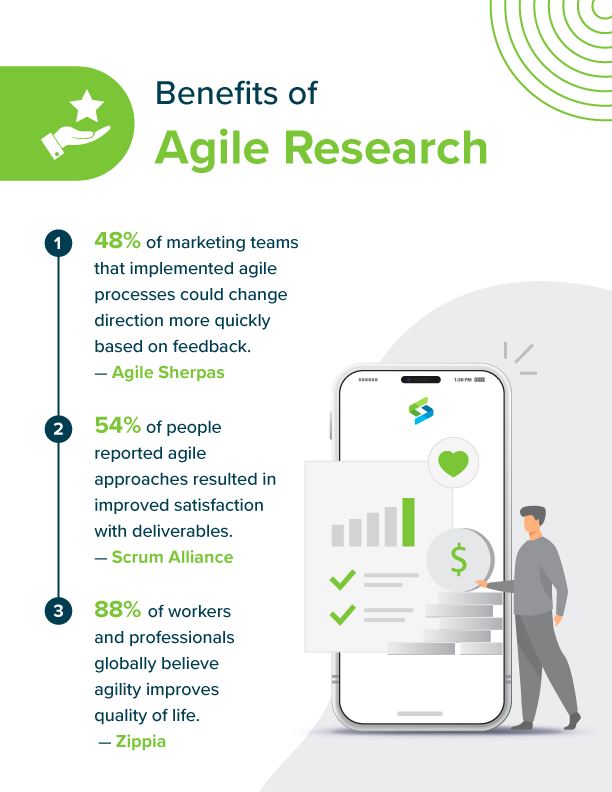Seventy-six percent of organizations undergoing an agile transformation cite “transforming the culture and ways of working” as their biggest challenge.
How do you even begin to address the need for a culture shift? It can feel like a daunting task. Simplify it by tuning into the known issues first.
- Do you or others on your team want more technology within your current research process?
- Are people or departments worried technology will take their jobs from them?
- What are the triggers within the marketing, product, etc. process that typically warrant research? How should those change when you adopt agile research and its associated technologies?
- Is your company more traditional, meaning members may not understand the benefits of agile research?
Answering these questions gives you a more complete picture of where you might meet resistance and need to come prepared with solutions. For instance, if your team members do not want more technology involved in their research process, find examples of other places technology helped them to do their jobs better. If they fear job loss, emphasize the ways the technology allows them to focus on their high-value tasks rather than on simple or tedious ones.
If your team struggles to understand the benefits of agile research, select some that relate directly to their day-to-day lives.

After you share the benefits of agile research with your team, identify those core users who express the most openness to agile research. Pilot the new process with them first, having them identify key opportunities for standardized approaches (repeatable methods) among different potential users in the organization. Take their findings, and map out how agile research fits with an agile development process. Clearly outline the steps for research, along with key reporting measures. Share these with all those involved in conducting or using the research.
Steps to Increase Team Buy-in for Agile Research
- Launch a pilot project for a few excited early adopters.
- Identify repeatable methods for other team members.
- Share research findings.
- Map where agile research fits into agile development.
- Outline research steps and key reporting measures.
- Share these best practices.
- Provide continuous training.
 To help people unlearn the idea that research takes too long or costs too much, provide continuous training to help teams identify where they may optimize and streamlines their research processes. The number one reason agile projects fail is lack of experience with agile methods. The same will be true for agile research if your team does not feel equipped to use the new technology or navigate the new system.
To help people unlearn the idea that research takes too long or costs too much, provide continuous training to help teams identify where they may optimize and streamlines their research processes. The number one reason agile projects fail is lack of experience with agile methods. The same will be true for agile research if your team does not feel equipped to use the new technology or navigate the new system.
Once your team is trained, continue to reiterate where and how consumer insights must be used to make better business decisions and improve the overall outcomes of the organization.
If you would like to see an example of executing this culture shift, read BMO Financial Group’s case study. As one of the largest financial institutions in North America, BMO successfully integrated agile research into its organization with incredibly positive results.










 3 Minutes
3 Minutes 











